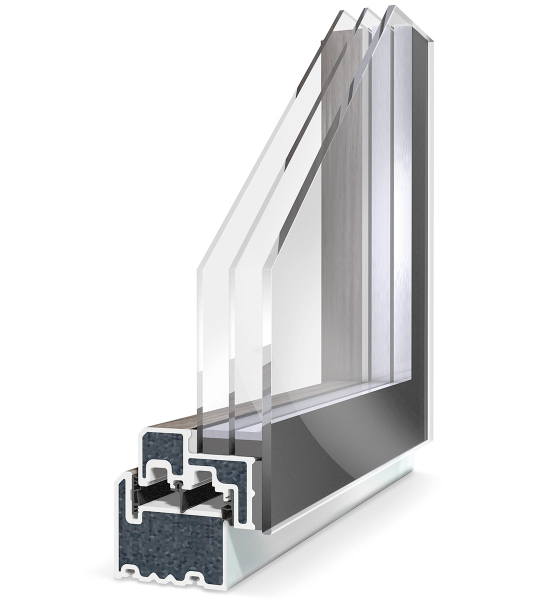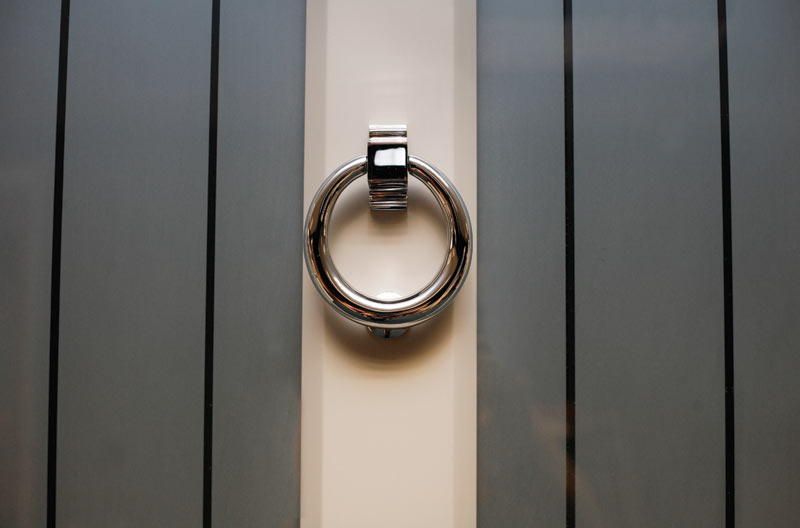We often moan as an industry that we lag a good two decades behind other countries on the continent, namely Germany, Austria and most of Scandinavia. And for good reason. A lot of our products and the way we install them are rudimentary in comparison to theirs and our focus on price rather than quality has hindered the development of our overall product portfolio. But not all companies are thinking like that. In fact some are really putting their foot to the floor and developing some amazing new products which could shape the future of the industry, for the better.
Seamless glazing
There is a definite trend in glazing for windows and door to have a much glass as possible with as little visible frame possible. Well a product called Lumi Seamless Glazing takes that trend one step further.
Lumi Seamless Glazing is a new product from Apeer. They are a company focused on design and high quality, so are positioned at the higher, quality orientated end of the market. To give you an idea about Seamless glazing and how it works, here are two close ups of the product:


Image credit: Apeer – click to visit website
As you can see from the first image, the frame of the product is concealed by the glass itself. The image also shows that glass being coloured, which allows it to obscure the framework behind it. Creating a visually stunning glass border effect unlike anything else seen on residential products before.
The second image gives us a bit more detail as to how the product is put together. The frames are thermally reinforced, with the sash holding a triple glazed unit, with the outer pane of glass dropping down in front of the sash frame to give it that seamless look.
And here’s the impressive bit, according to Apeer’s website, this product takes a 50mm triple glazed unit! Previous estimates on the effectiveness of triple glazing stated that tangible benefits could be felt on a 44mm unit. Here’s how Apeer explains it on their website:
The 50mm triple glazing is made from 6-4-4 toughened glass, insulating the home against both cold and noise. The flush glazing completely hides the glass-fibre double rebate stormproof frame, offering exceptional U-values and unparalleled weather protection. We can also supply this triple glazed unit with two panes of low emissivity glass filled with argon gas for enhanced energy efficiency.
As far as aesthetics goes, this is one of the best products I have seen.
Composite windows

The subject of composite windows was the focus of my previous post on DGB.
I have talked previously about the need for the industry to start experimenting more with more than just one material. I believe there is a world of possibilities ahead once we start really ploughing some R&D money into unlocking the potential of combining materials.
I did see an example from the last Fensterbau of a window made of aluminium, PVCu and timber. I’m not sure if it was any good, but it sure did look the part!
The effects when more than one material is combined are profound. You only have to look at composite windows to see the quality and visual advantage something like that gives you. Definitely a future in this type of product.
Frameless glazing
We have seamless glazing, a product which masks framework with a stunning piece of glass. So how about residential doors without any frames at all?
Well that is a product I am quickly seeing a lot more of. Yes it’s been around in the commercial sector for a little while, but never in the residential market. But I have seen a number of companies pop up recently bringing the product to the residential market properly.
Two such companies are Frameless Glass Curtains and IQ Glass. Both companies have residential and commercial facets, but I have seen a general interest rise in the residential market for a product like this. Take a look at the galleries of these two companies, there is some seriously sexy work going on with frameless glass right now.
Timber alternative PVCu
Far from being a niche product now, the timber alternative market has had a direct influence on how the industry produces it’s PVCu windows and doors.
Until this came along, there were some pretty poor examples of PVCu trying to imitate timber. But along came the likes of Evolution and Residence 9 to change all that and show the industry that PVCu really can look as good as their timber brothers.
This influence will continue. I think as an industry we’ll start to see less shiny white and much more wood grain. Whether that be in the form of dedicated timber alternative frames or standard PVCu profile, who knows. But I can guarantee that the timber alternative market will continue to expand aggressively as homeowners become more and more aware of the rising standards of PVCu.
Signs for the future
The four examples I have given here are products that I believe will influence the way the industry evolves it’s products over the coming years. Will these four examples become best sellers and de-throne all other products? Probably not. But their vision, ideas and innovations will trickle down throughout the rest of the industry to gently push the sector along in a better direction.
I may now be starting to believe that in some corners of the UK fenestration industry, we might not be as far behind parts of Europe as I first thought.
To get daily updates from DGB sent to your inbox, enter your email address in the space below to subscribe:
[wysija_form id=”1″]





